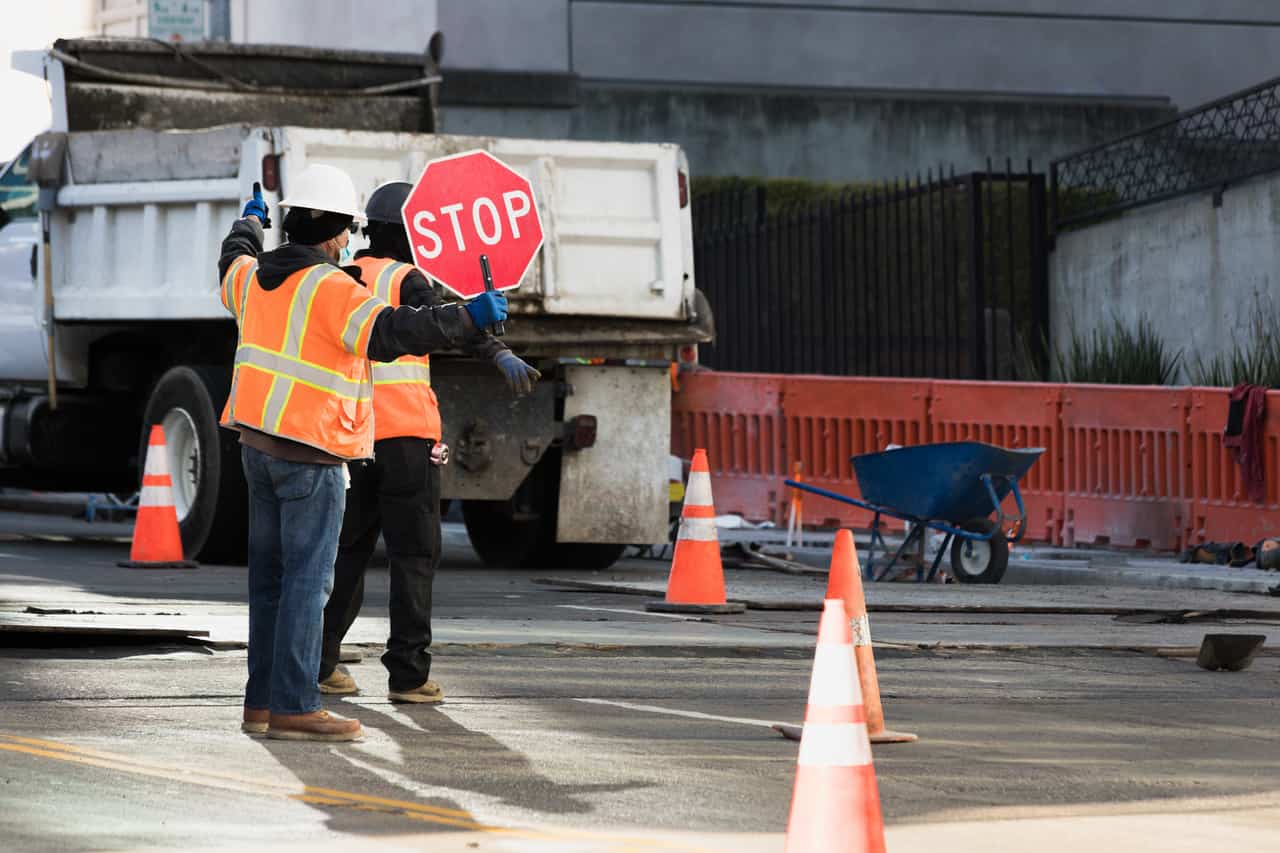Traffic management is a critical aspect of many construction projects. It involves establishing a seamless flow of vehicles passing, entering, or exiting the construction site and surrounding areas.
Proper construction traffic management can help promote worker and motorist safety by determining the best routing plans, timing vehicle movements, parking suspensions, and more. But how should contractors and property owners ensure smooth construction traffic management?
Read this quick guide to make construction traffic management much easier and yield more successful outcomes for all parties.
1. Create A Comprehensive Traffic Management Plan
Without a good traffic management plan, a construction site has a high risk of more accidents and project delays.
Experts knowledgeable of the construction site’s local area must create a traffic management plan. Fortunately, contractors don’t need to worry about developing and implementing a traffic management plan. Expert traffic control companies can help handle this job.
Contractors can seek the services of a professional traffic control company to develop a construction traffic management plan (CTMP). This document is essential before the start of any construction project to help reduce the impacts of construction activities on local businesses and residents.
2. Conduct A Swept Path Analysis
Swept path analysis calculates and studies vehicle path, trajectories, and movement, which aids road layout design. This step is essential in construction traffic management, simulating the maneuvering of a model vehicle. It helps ensure no obstruction of the emergency or temporary access route during construction.
Swept path calculation serves as a basis for plotting machinery and vehicle routes. It’s also done in residential or commercial development needing removal or delivery of construction materials. Construction sites may need updated and new road layouts. Moreover, existing traffic flow, speed, and volume are crucial considerations in swept path analysis.
Construction and traffic control companies usually use swept path software for a more accurate analysis. This tool has a library of different vehicles for examiners to analyze the potential traffic scenarios on construction sites carefully.
3. Obtain Permits And Approvals
Determining the permits and approvals are imperative before construction work commences. Construction companies can find this information in the local area’s traffic management authority and other related agencies. Furthermore, a traffic control company can help contractors prepare and complete all documents, such as a CTMP, to get the permits and approvals for their project.
4. Include A Pedestrian Management Strategy
Contractors should accommodate pedestrians when planning construction traffic management. They must communicate hazards to pedestrians and provide alternative routes to pass by safely.
Before breaking the ground, construction companies should already have a detailed pedestrian management strategy. This strategy must also consider visually impaired and disabled pedestrians by placing easily recognizable barriers and audible instructions to ensure pedestrian safety.

5. Improve Visibility
Improving visibility is essential, especially in construction sites where automobiles reverse and pedestrians cross. Lack of visibility can compromise safety and on-time project completion.
Construction companies can improve visibility to avoid traffic accidents by installing closed-circuit television (CCTV) cameras, mirrors, or alarms to help motorists analyze all vehicle movement directions.
Traffic control companies have expert vehicle marshallers, highly trained and experienced in controlling maneuvers and traffic. Moreover, contractors must install adequate lighting and signs for everyone’s safety.
Construction workers and pedestrians must also wear high-visibility clothing, especially at night.
6. Train Drivers and Construction Workers
All parties in a construction project must be aware of the traffic rules on the construction site. Drivers, visitors, and construction workers must undergo proper training before entering a construction site.
Training can help increase their awareness of the CTMP, standard operating procedures (SOPs), and other relevant topics to avoid accidents and complete the construction project without impediment.
7. Install Construction Traffic Signs
Installing signs is a critical step in construction traffic management. It’s also a way to comply with regulatory guidelines and traffic laws. Motorists need to easily recognize road construction signs to take precautionary measures when approaching construction poses.
Strategic placement of construction traffic signs also helps promote the safety of construction crews and motorists on roads and highways. Construction signs must have an easy-to-identify color (usually orange) with black symbols or texts.
The most common road construction traffic signs include the following:
- End road work
- End work zone speed limit
- Detour
- No passing zone
- Street closed
- One lane road
- Construction curve
- Flag signs
Conclusion
Construction traffic management involves having a comprehensive traffic management plan, conducting swept path analysis, and other related tasks. These steps ensure everyone’s safety and smooth construction operations with less impact on businesses and residents in the area. Lastly, construction traffic management is a collaborative effort that requires the participation of construction crews, pedestrians, motorists, and traffic control enforcers.



